Ginataang halo-halo is rich, creamy, and loaded with coconut flavor. Made of glutinous rice balls, sago, tropical fruits, and tubers, it makes a delicious and filling snack, dessert, or breakfast!
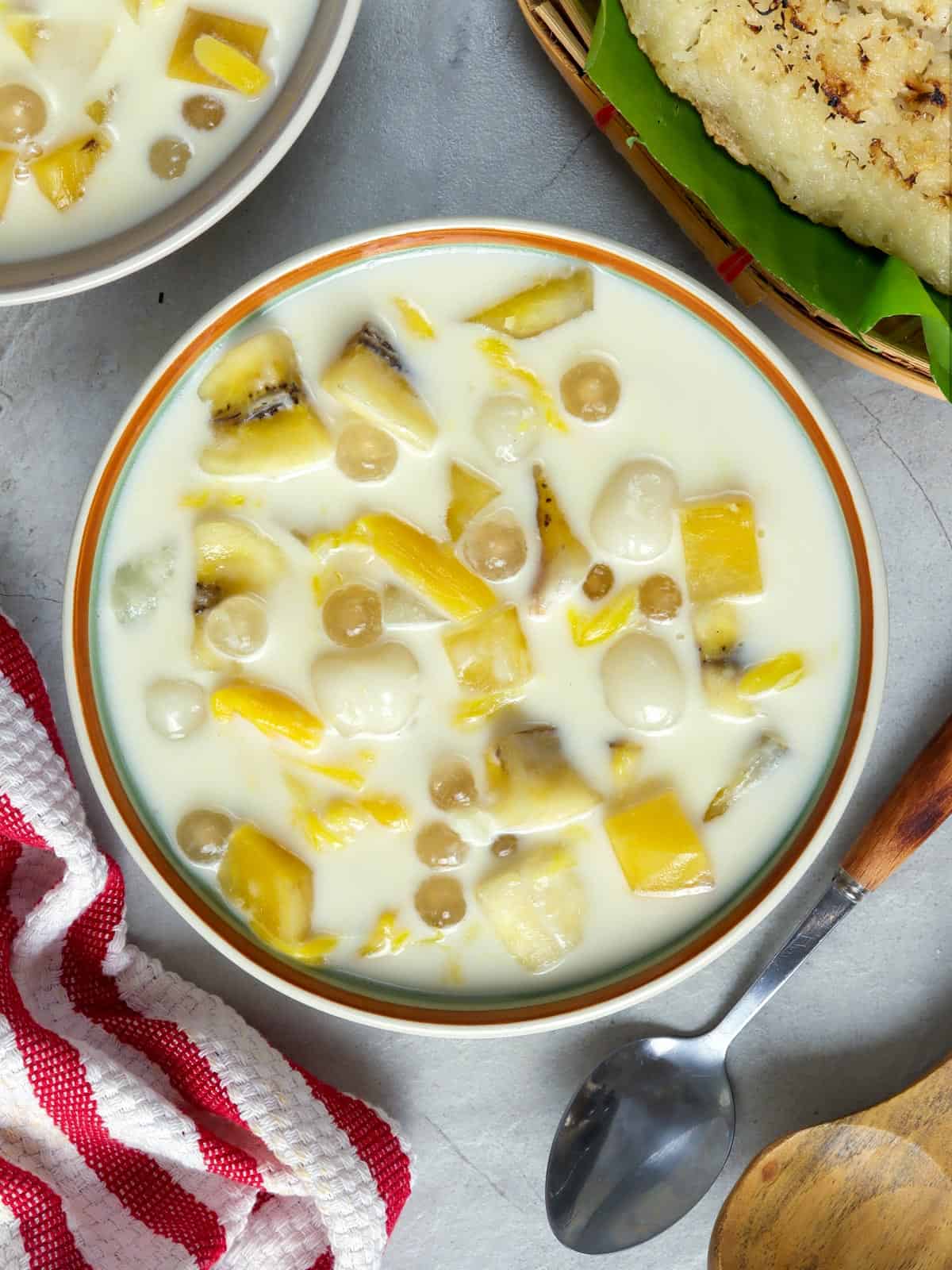
What is Ginataang Halo-Halo
Ginataang halo-halo is a popular Filipino delicacy made of sticky rice balls stewed in coconut milk. It's widely enjoyed as a snack, dessert, or breakfast throughout the year and a staple dish during the Lenten season when Catholics tend to fast and abstain from eating meat.
Along with some variations in ingredients, the dish's name may also differ from one area of the country to the next. I am a Kapampangan, and we call it sampelot, but it's also known as binignit, alfajor, linugaw, ginataang bilo-bilo, ginatan, kamio, kiniler or tambo-tambong.
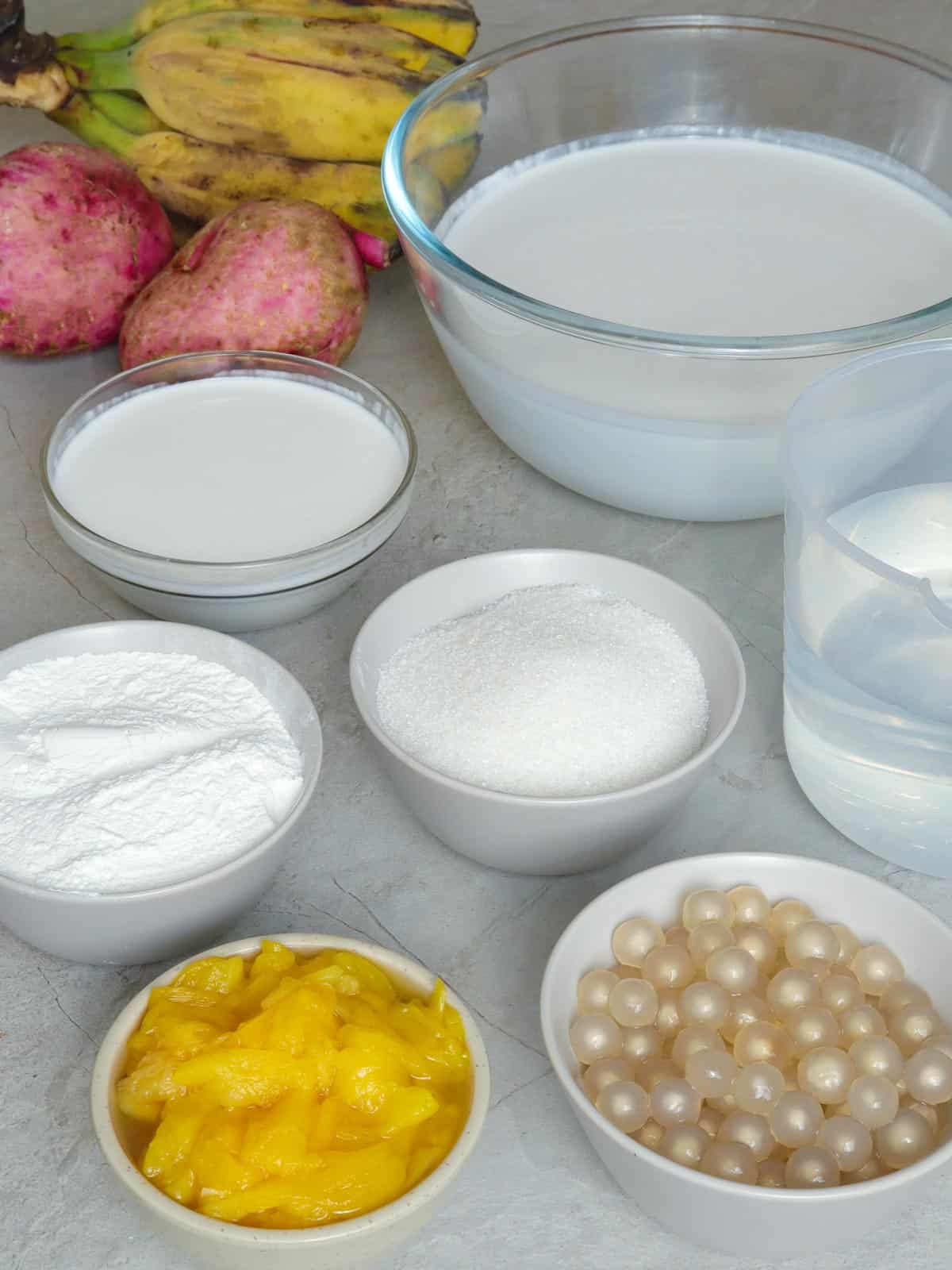
What you'll need
This ginataan is a "halo-halo" (mix) of various ingredients. Along with coconut milk and glutinous rice balls called bilo-bilo, the sweet stew may also include sago pearls, tropical fruits such as jackfruit and saba bananas, and root crops such as kamote (local yam), ube (purple yam), and taro (gabi).
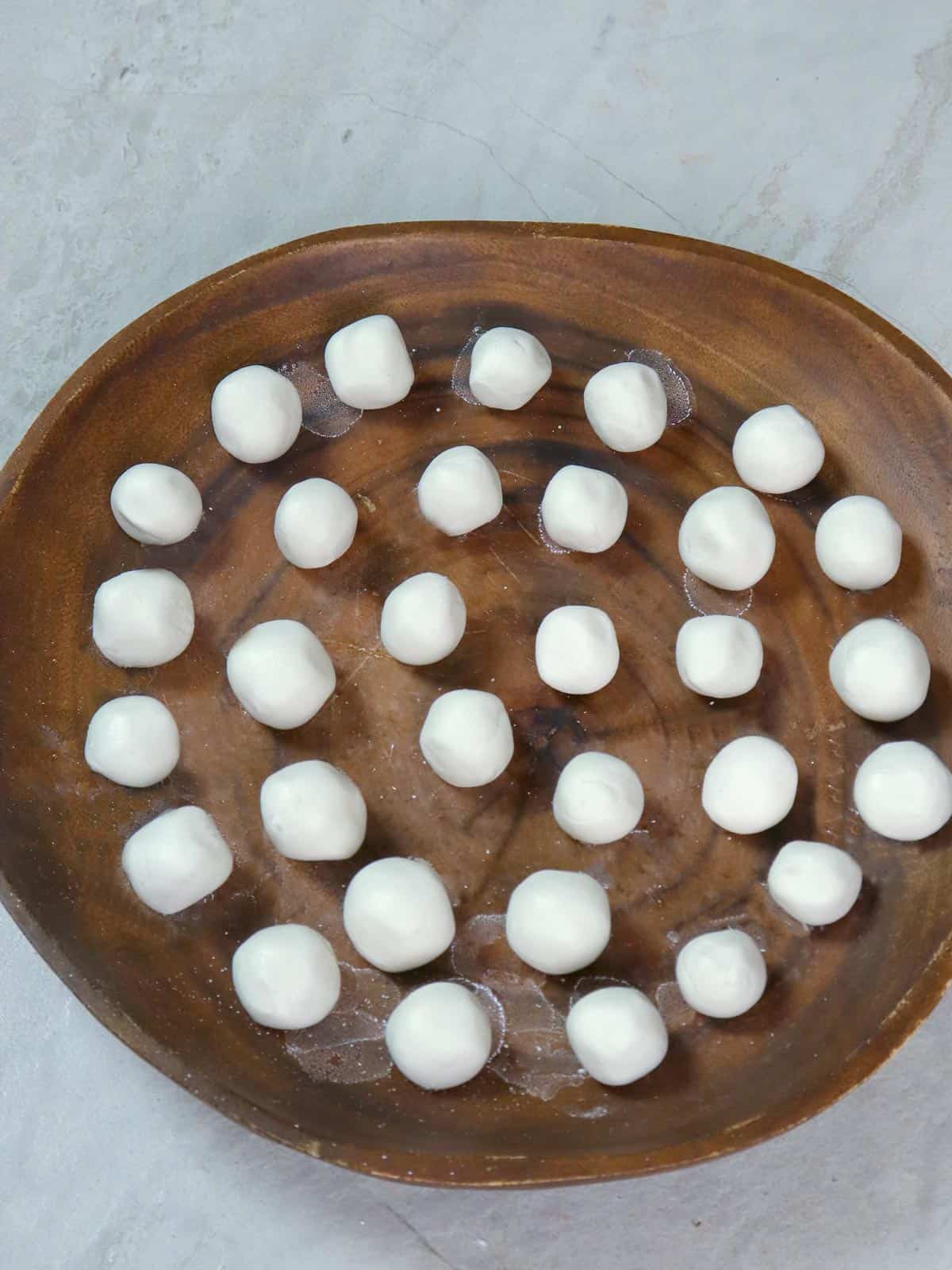
Making the sticky rice balls
- Combine glutinous rice flour and water into a pliable dough. If the dough is too sticky, add more flour; if too crumbly, add more water.
- To make the sticky rice balls ahead of time, arrange in a single layer on a baking sheet or shallow plate, cover them with plastic film to keep from drying out, and refrigerate them until ready to use.
- To store indefinitely, arrange the balls in a single layer on a baking sheet, cover with plastic film, and freeze them until firm. Transfer to resealable bags or airtight containers when hard and keep in the freezer.
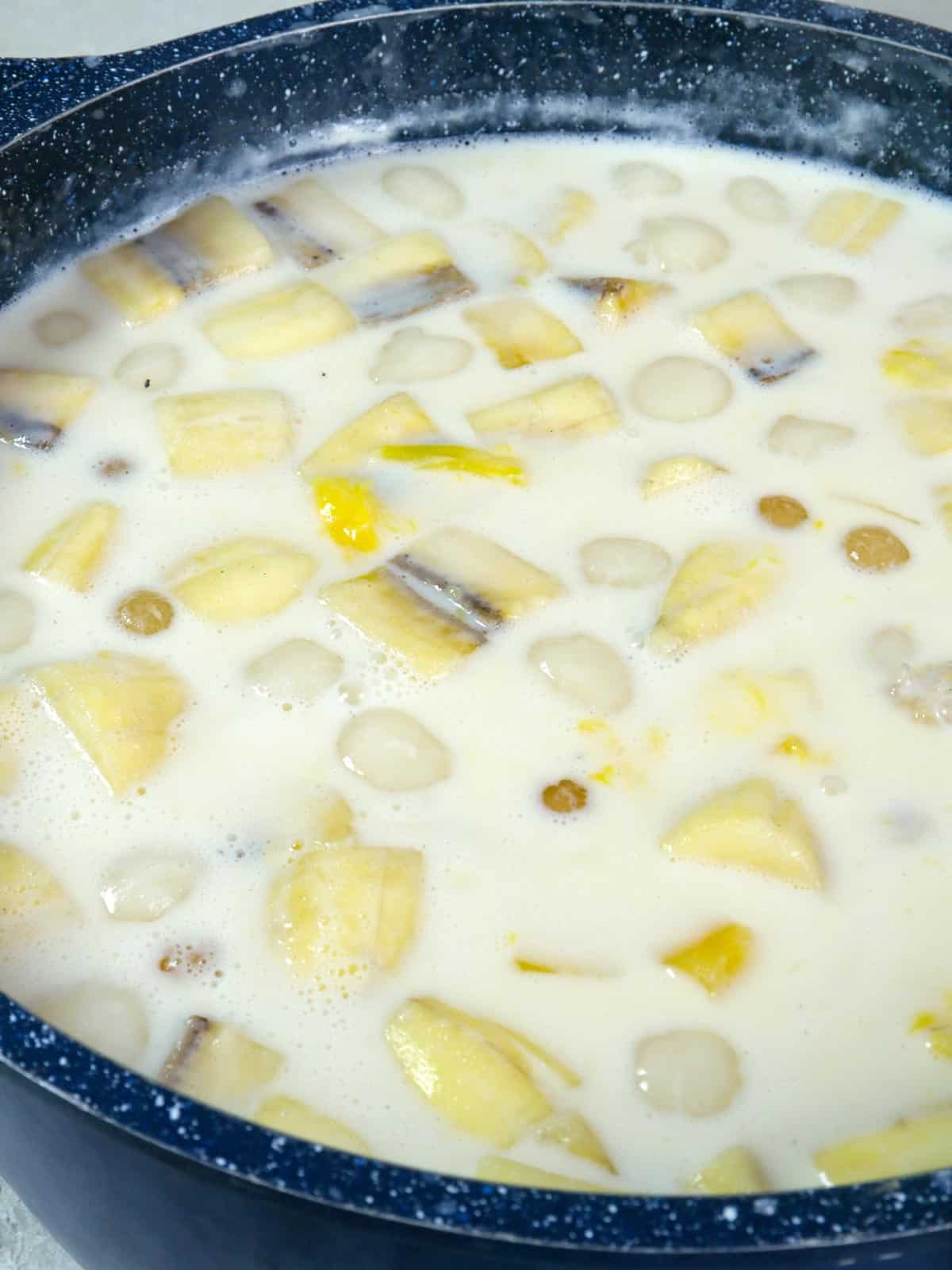
Cooking tips
- Cut the bananas and tubers into uniform sizes to ensure even cooking.
- You can find cooked sago sold at wet markets or in supermarkets. If you prefer, you can buy and cook the dry pearls yourself.
- If using canned or bottled jackfruit instead of fresh, make sure to drain well, as they're usually packed in heavy syrup.
- Add a few drops of ube or langka extract to half the bilo-bilo dough for a color and flavor boost.
- Cook the coconut milk at a gentle simmer, and do not boil lest it curdles or separates.
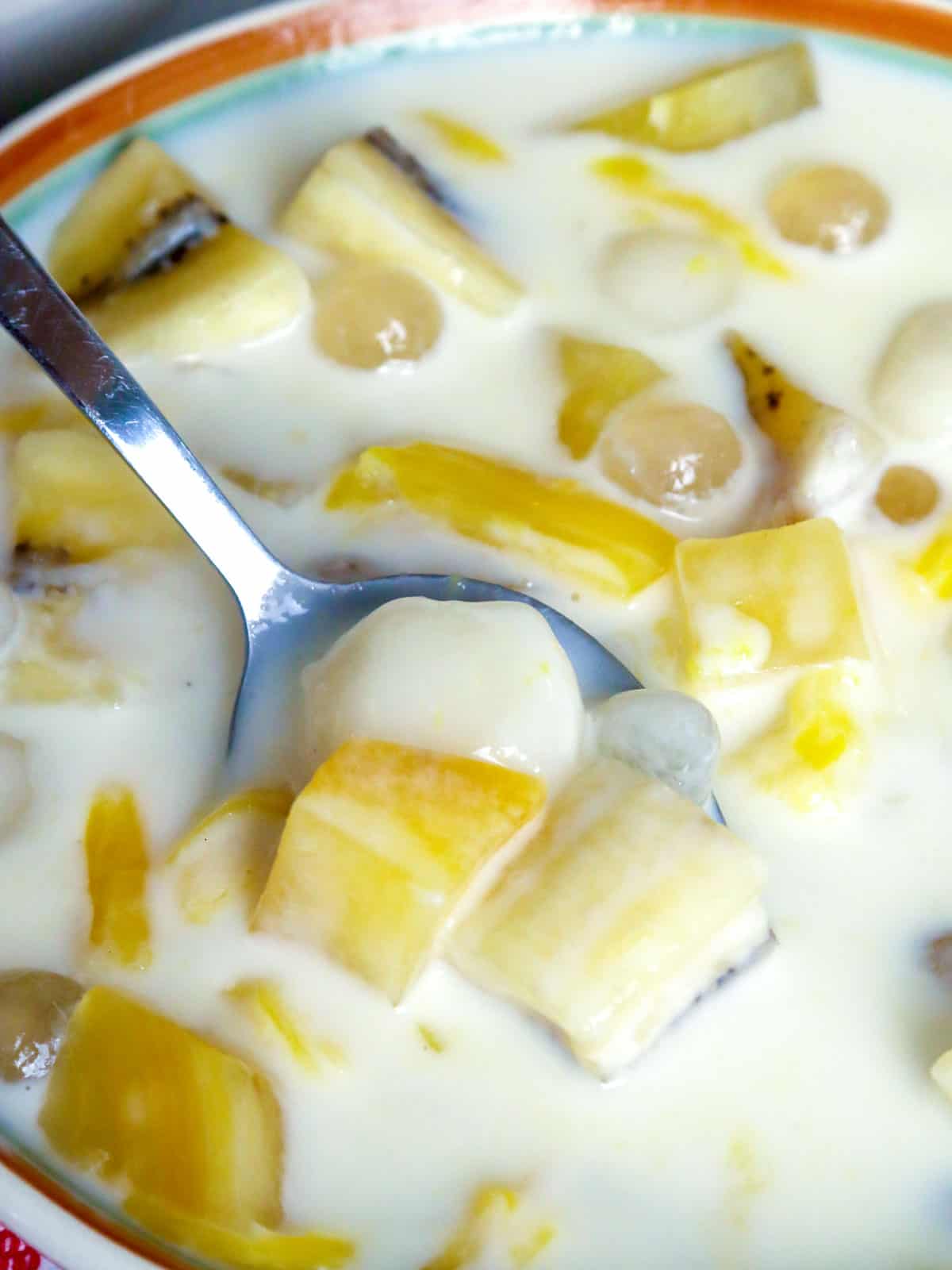
How to serve and store
- Ginataang halo-halo can be enjoyed warm or cold for breakfast or after meal dessert.
- Transfer leftovers to a container with a lid and store in the refrigerator for up to 3 days. I do not recommend freezing as the bananas turn black and mushy when frozen and thawed. When frozen, the sticky rice balls also turn hard and lose their chewy texture.
- The ginatan will thicken as it cools; add a generous splash of coconut milk when reheating to loosen the consistency.
More coconut desserts
Ingredients
- 1 cup glutinous rice flour
- 2 ½ cups water
- 3 cans (13.5 ounces each) coconut milk
- 2 (about 4 cups) large camote, peeled and cubed
- 2 (about 2 cups) saba bananas, peeled and cubed
- 1 cup cooked sago
- 1 cup jackfruit strips
- 1 cup coconut cream
- 1 cup sugar
Instructions
- In a small bowl, combine glutinous rice flour and ½ cup of the water into a pliable dough. If the dough is too sticky, add more flour; if too crumbly, add more water.
- Using the palms of your hands, form dough into smooth balls the size of marbles. Arrange shaped dough balls in a single layer on a baking sheet or shallow plate and cover with a cloth until ready to use.
- In a large pot over medium heat, combine coconut milk and the remaining 2 cups water. Bring to a simmer.
- Add camote and cook for about 3 to 5 minutes or until almost tender.
- Add bananas, sago, and jackfruit and cook for about 3 to 5 minutes.
- Add glutinous rice balls and cook for about 3 to 5 minutes or until they start to float on top.
- Add sugar and stir until dissolved.
- Add coconut cream and continue to cook until bananas and camote are tender and the sauce thickens to desired consistency.
- Serve warm or cold.
Notes
- For a color and flavor boost, add a few drops of ube or langka extract to half the bilo-bilo dough.
- Cook the coconut milk at a gentle simmer, and do not boil lest it curdles or separates.
Video

Nutrition Information
“This website provides approximate nutrition information for convenience and as a courtesy only. Nutrition data is gathered primarily from the USDA Food Composition Database, whenever available, or otherwise other online calculators.”
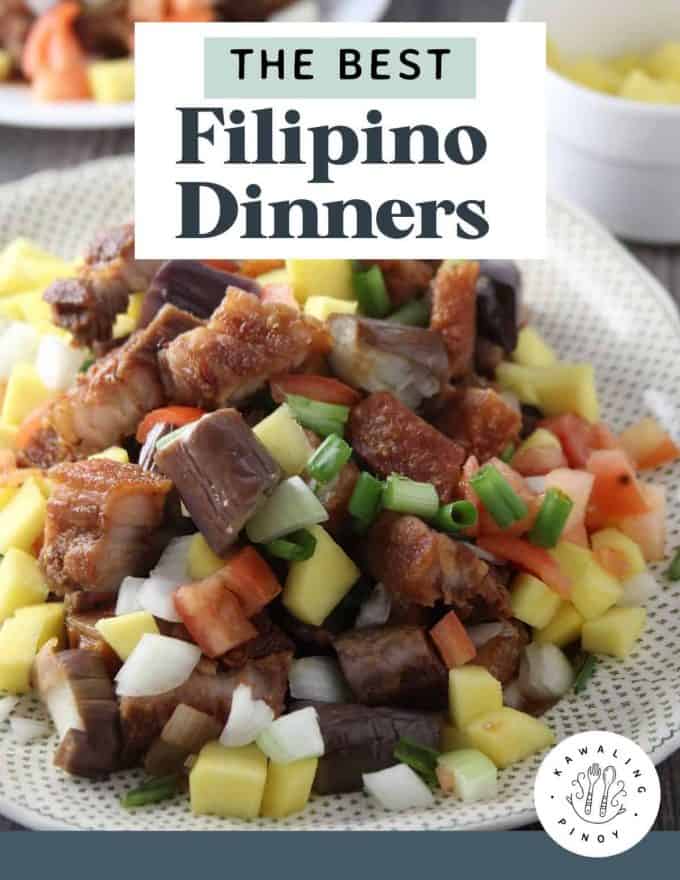
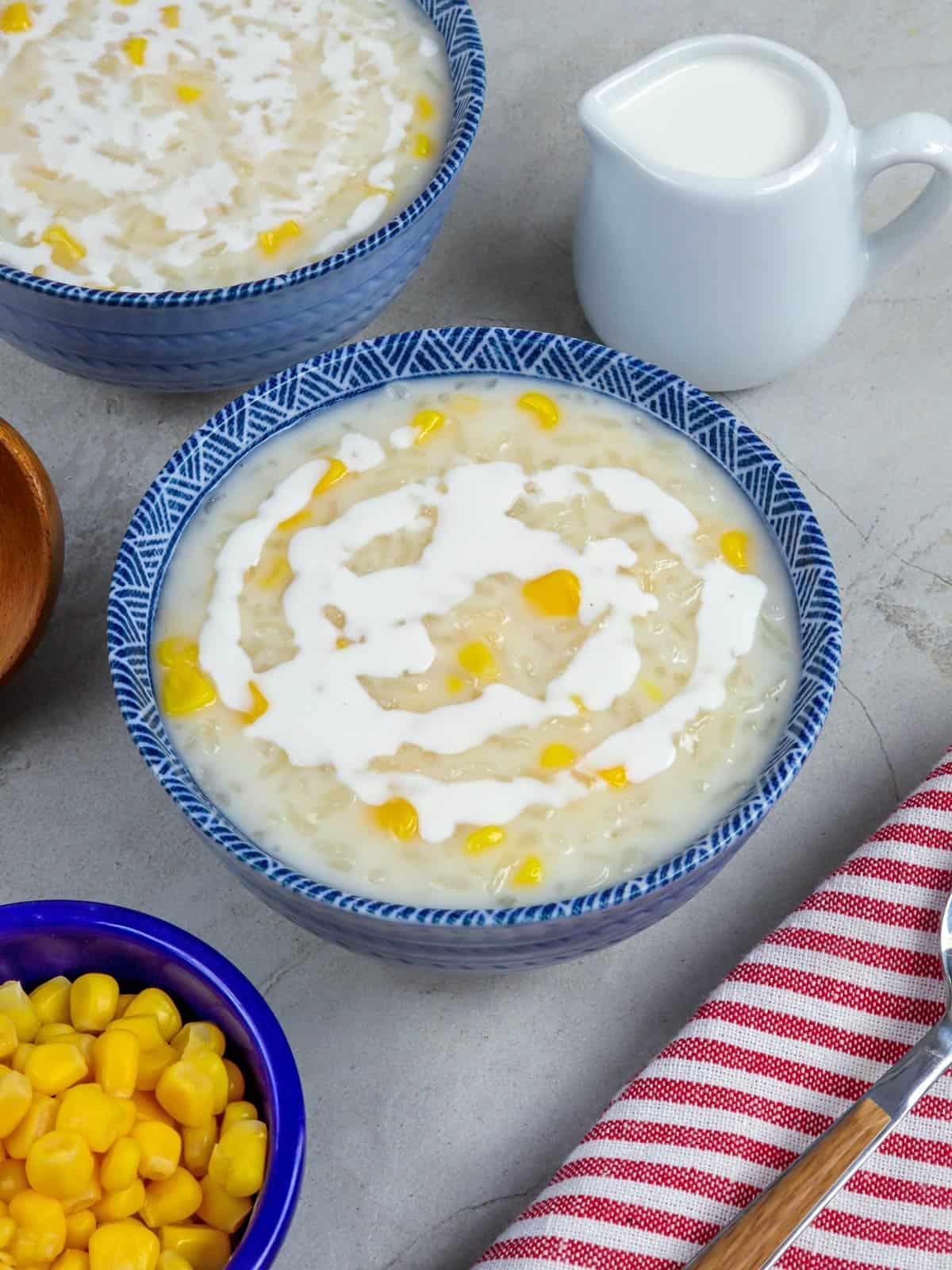
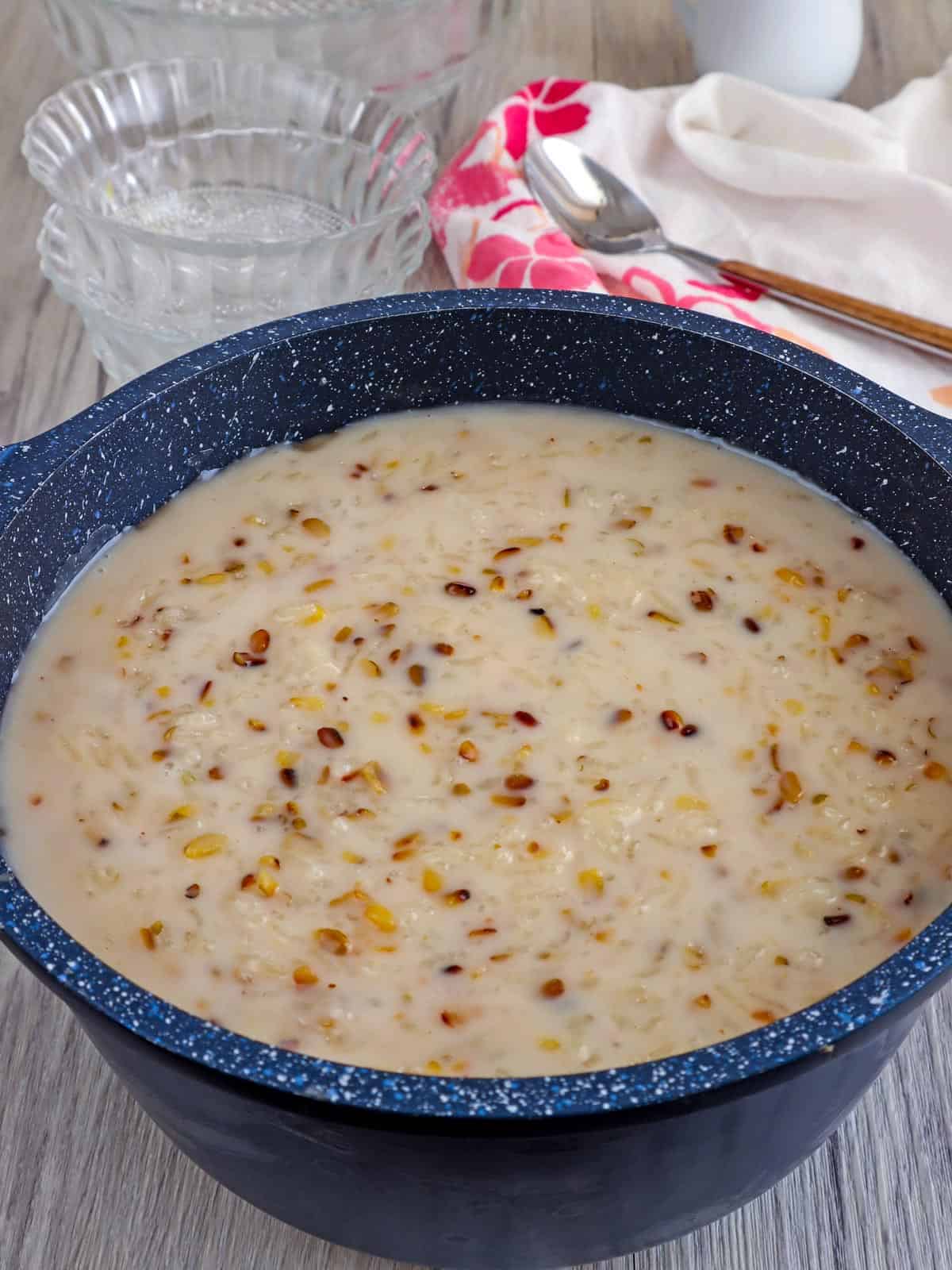
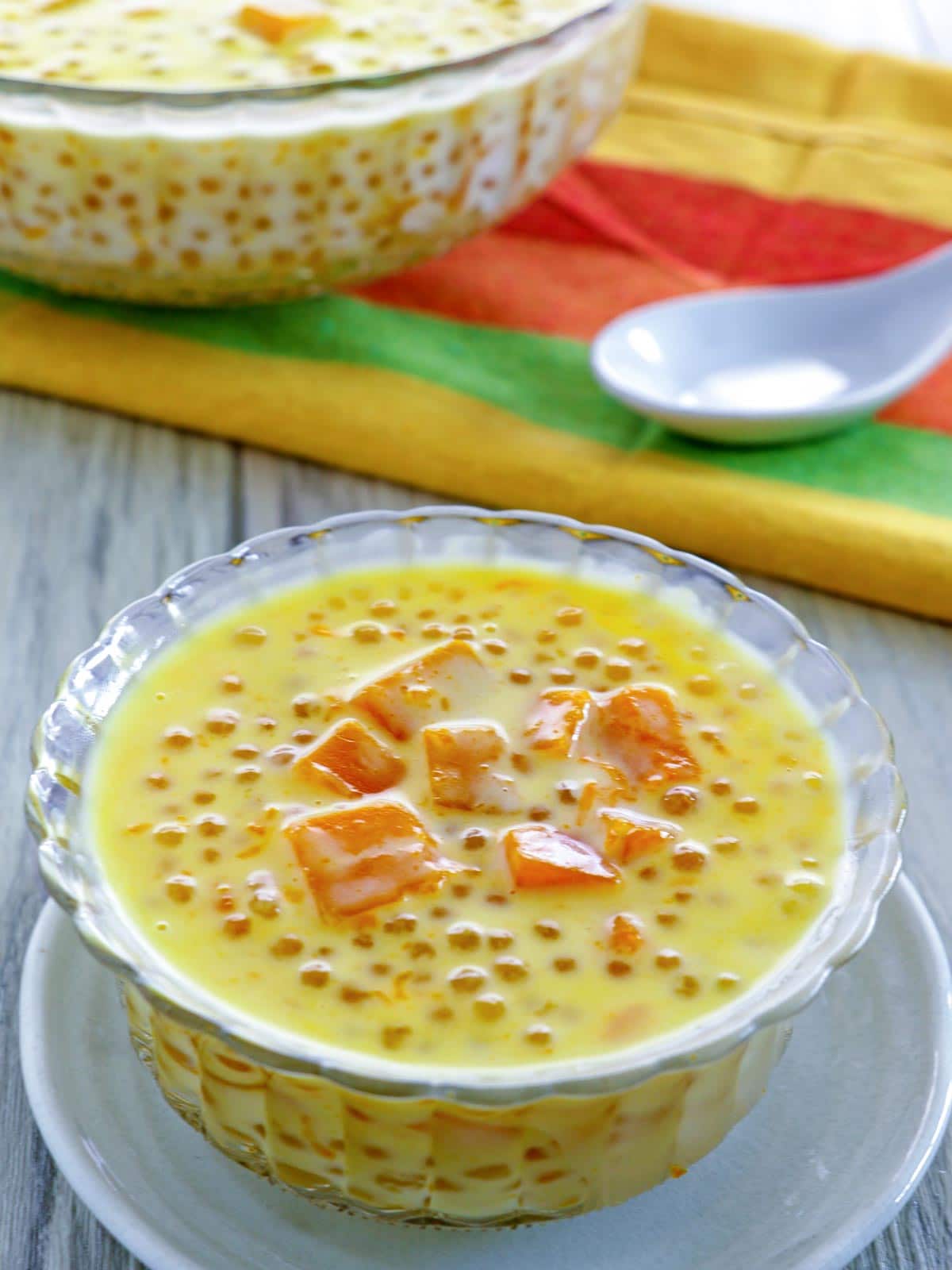
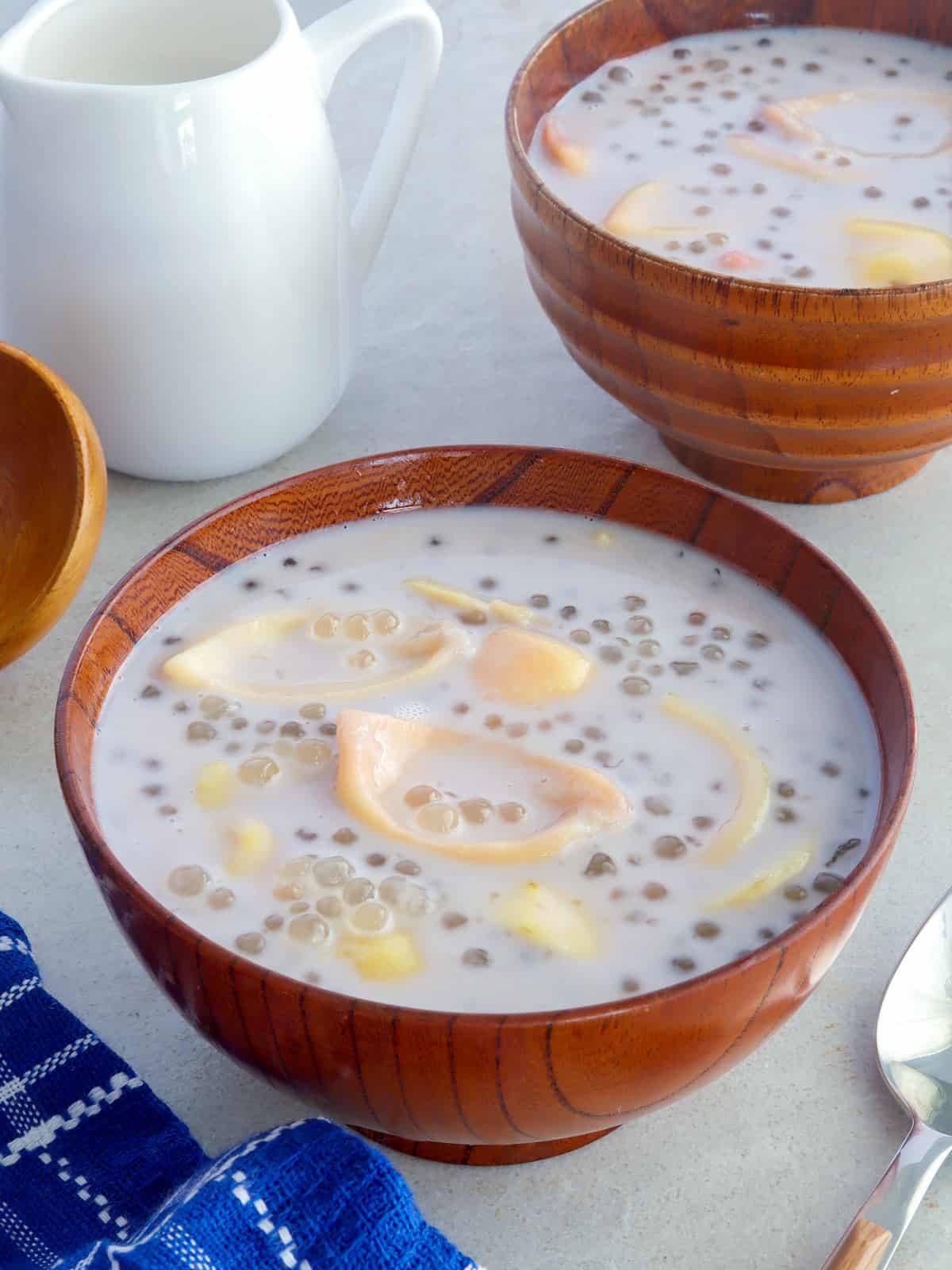
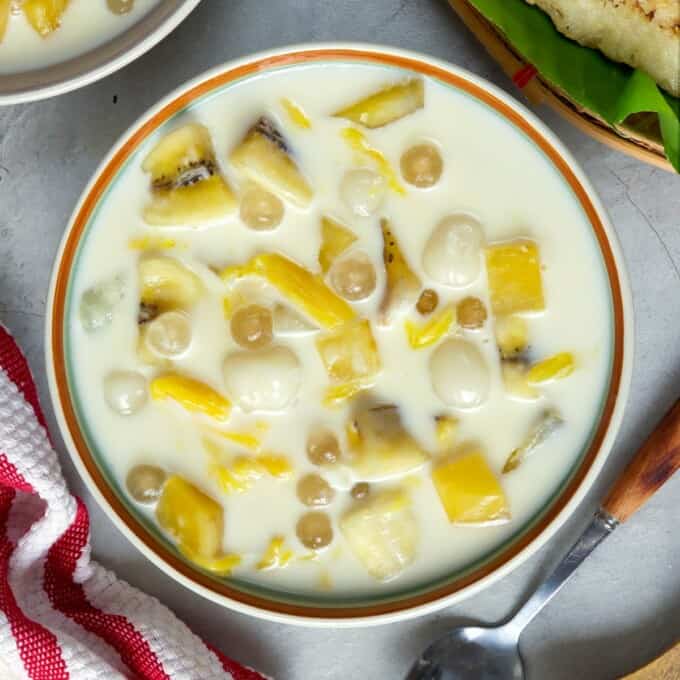
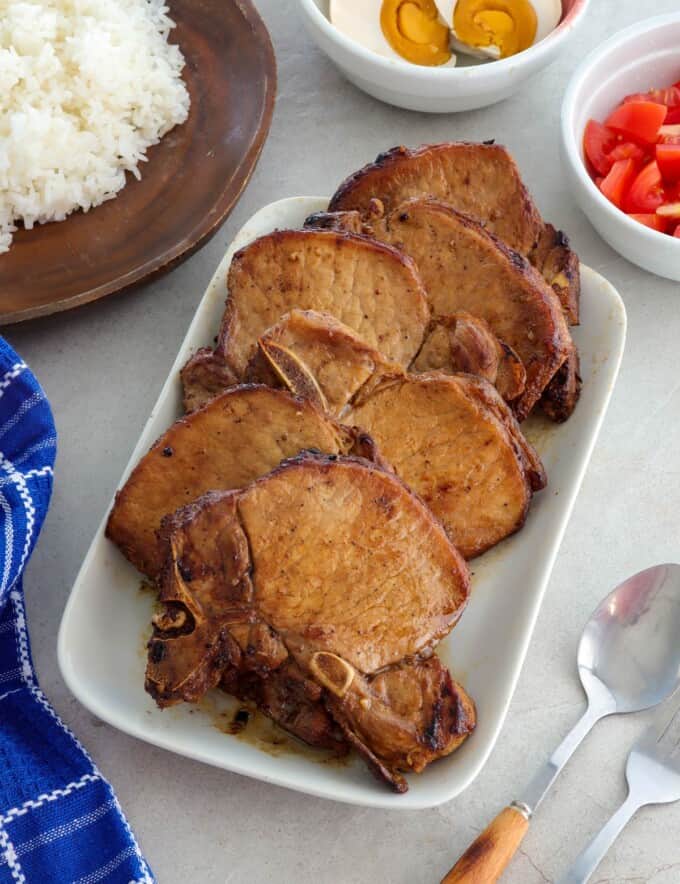
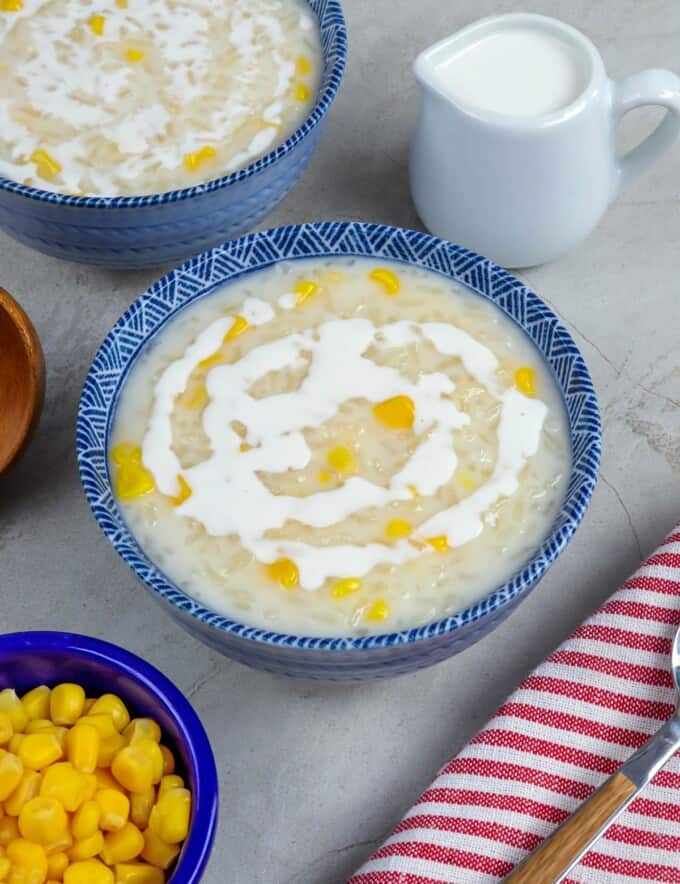
Mar says
Ginataang halo halo, mainit ba o dapat Malamig?
Pamela says
We call it paradosdos here in Ilocos or sometimes tambo tambo😊
Elsa says
Hi Lalaine.
This Ginataang halo-halo has become the #1 hit in our family and friends gathering! Sooooo yummy!! Thank you so much for sharing your yummy recipes! : )
Gisela Elefano says
Hi Lalaine, I never bought coconut cream, can I omit coconut cream? I will just use coconut milk.
Thank you.
Gisela
Lalaine Manalo says
Hello, Gisela,
Coconut cream is coconut milk, only thicker. Kakang gata siya, the first extraction. Coconut cream lang ang tawag kasi dito sa US.
G says
Can i use coconut powder?
Lalaine Manalo says
Yes, you can. Just reconstitute according to the package's directions.
Arlene says
Delicious! Thank you for the recipe.
Lalaine Manalo says
Yay! I am glad you enjoyed it 🙂
Susan says
I cooked this today .... I added purple yam but no jackfruit....so yummy 😋😋
Thank you very much for your recipe.
Lalaine Manalo says
Yay! I am glad you enjoyed it. 🙂
Susan says
I cooked this today .... so yummy 😋😋
Thank you very much for your recipe.
Ktine says
Napadami gawa ko, pwede ba tong ifreezer?
Lalaine says
Hindi ko pa nasubukan i-freezer but I think it would be ok, although expect some change in the texture of the banana and camote.
Necole says
What is a coconut milk?
Lalaine says
It's the creamy liquid extracted when grated mature coconut is pressed 🙂
Maria Legaspi Payne says
Thank you very much Lalaine i am so glad i found your website
Maria
Lalaine Manalo says
I'm glad you found me 🙂
Necole says
How to get cookbook?
Ana says
Can i use sweet rice flour? Tx
Lalaine says
Hello Anna,
Yes, you can use sweet rice flour. Sweet rice is another name for glutinous rice. 🙂
Riza says
The writing on your website is very small... they are very difficult to read for older people like me! How about using bigger fonts and darker colors? Then I won't need magnifying glasses!
Thank you!
Lalaine says
Hello Riza,
I am sorry about that. I am planning a site redesign in the next few months, I will certainly look into changing the fonts to make it easier to read. THank you!
Bambi says
We call it kiniler here in pangasinan
Lalaine says
Thank you, Bambi!
Ally says
We call it Bobo-chacha in malaysia and singapore
Lalaine says
Thank you, Ally 🙂